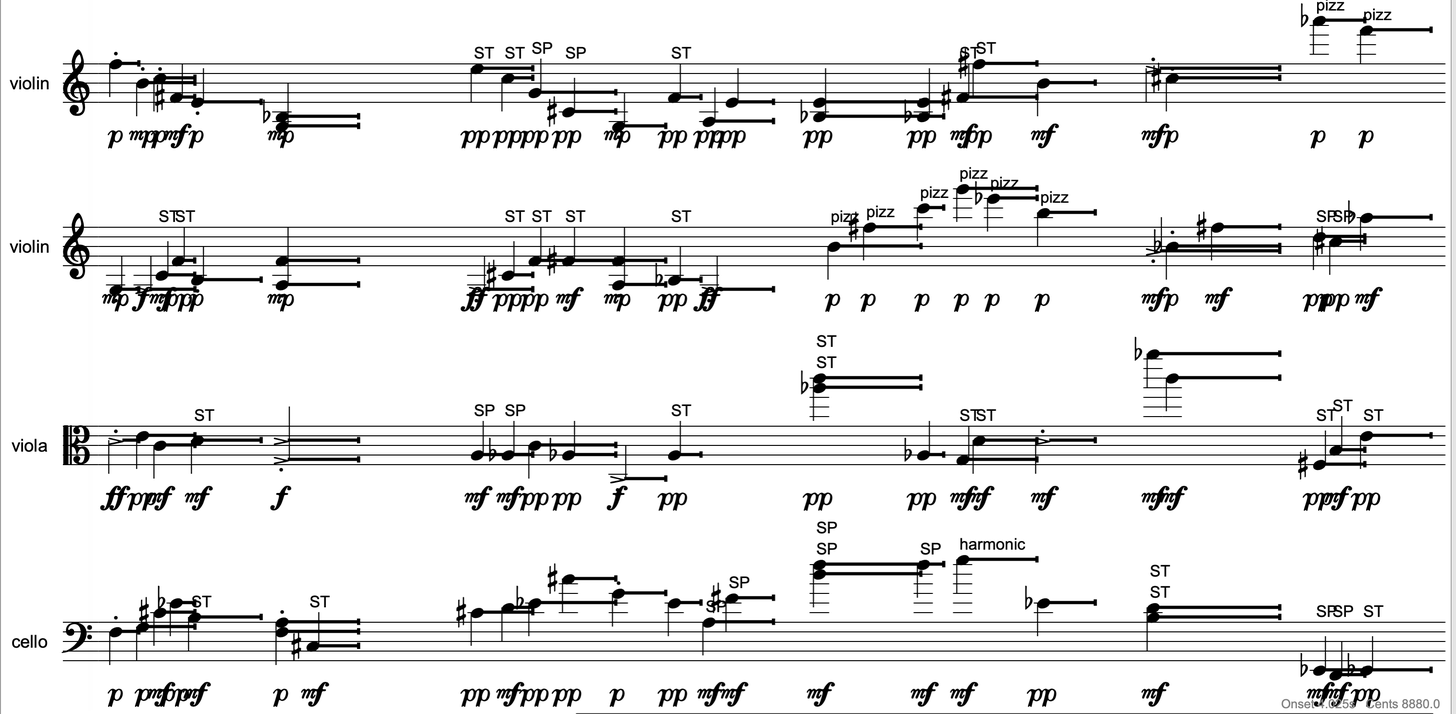AudioGuide now lets you to do concatenative synthesis to create instrumental parts for acoustic ensembles of any size. This is facilitated by some new options-file objects as well as an output file format for bach.roll.
AudioGuide's instrument writing approach revolves around three principles:
1. detailed notation that let's you denote articulation, text, and noteheads (thanks to bach's slots).
2. temporal controls that let you define how each instrument may behave in time to ensure that generated scores are playable and idiomatic, including fine tuning the speed of notes, leapiness, polyphonic possibilities, and adding delays when changing from one playing technique to another.
3. flexible instrument objects that support writing for traditional instruments, but also let you design bespoke, experimental instruments for a wide variety of performative contexts.
Consider the following example. Using a short target sound of speech and a large corpus of string instrument sounds, AudioGuide was used to generate the following bach.roll data for string quartet:

Here is AudioGuide's audio output of the target and quartet mixed, just the quartet as well as violin 1, violin 2, viola, and cello parts.
You can learn more about all of the possibilities in a new video tutorial:
If you're new to AudioGuide, check out the detailed 5-part tutorial series. The new instrument writing infrastructure is documented here.